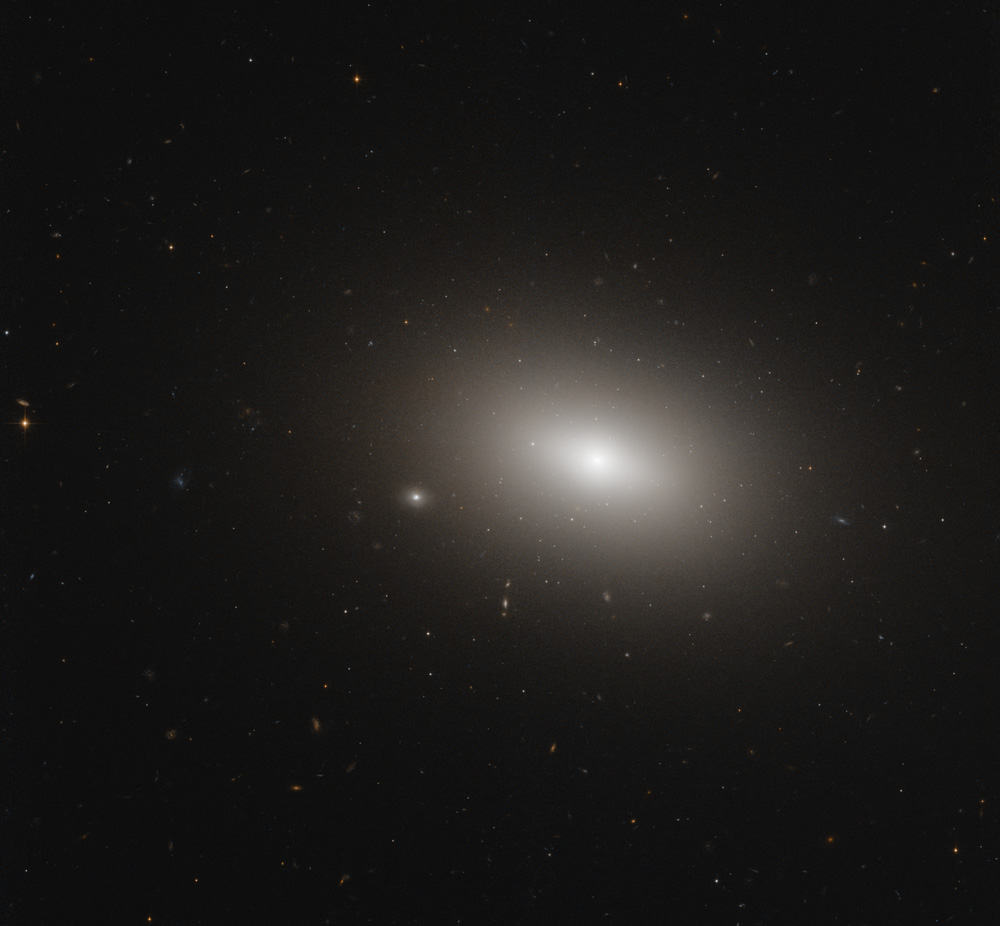
NGC 3818 (2014)
Looking over this elliptical galaxy in preview at the archive, at once I was struck by the sheer desolation of it. A casual observer will pass over this as just another boring elliptical. It lacks the personality of a spiral galaxy. It has few “friends” in the field, either in actual close proximity to it pretend friends from our Milky Way to occupy the field. This isolation is good. Without all the clutter, subtle details about the galaxy emerge. Nearly every fuzzy little white dot in the halo around this galaxy is part of the galaxy—ancient and mysterious globular clusters. The galaxy is not as smooth anymore. It does have tiny friends. Where did they come from? Why didn’t they smooth out with the rest of the galaxy? Are they in any special arrangement?
Visually, there is not a lot to occupy one’s mind. I thought of other things. These data are beautiful. The quality of Hubble data is almost always high but often in this telescope’s frantic lifetime there is no time for negligible details. A minimum of four separate exposures is required to easily eliminate most cosmic rays. Quite often, this simply does not happen. A minimum of two separate filters must be used to generate a color image. Happily, this bit is usually satisfied. The exposures must be dithered in a certain way to ensure the chip gap is covered. Depressingly, this does not happen often because there isn’t enough time to do enough exposures. This is all just satisfactory for scientific analysis. Hubble and its operators can’t be blamed.
We need more telescopes like Hubble and we need more professional observatories taking the extra effort to release their data to the public in a way that is easily accessible. We just celebrated the arrival of ESA’s Rosetta at comet 67P/Churyumov–Gerasimenko. Last night NASA’s MAVEN joined the Mars family of science instrument in orbit and on land. One of these missions will return raw data which will, within one year, be released for mass consumption by an eager public of amateur astronomers and space enthusiasts. The other is bogged down by petty politics. You can’t just complain about people being uneducated and ignorant if their access to data is stunted. Why are there so many athletes and sports fans? Well, it’s because there are thousands of stadiums built around the world. Virtually every kid has access. “If you build it, they will come.”
I am not delusional enough to think astronomy as a profession or hobby will ever be as popular as sports, but I do think there are improvements that could be made by scientists and organizations. If you release the data and encourage people to get involved with it, some more astronomers might just be born. NASA’s open policy is admirable. ESA’s leaves much to be desired and they’re not alone in that regard. I might be in a minority opinion on this and I’m not the one footing the bill on any of these expensive observatories but I’m very thankful that Hubble is operated by NASA in partnership with ESA and that means that it is part of NASA’s policy to release any proprietary data within one year. It’s a great thing. Science shouldn’t be reserved for the privileged. Not in this century. Not with the Internet and computers as accessible as they are. All I wanted to do was create some pretty pictures at the beginning but it’s grown into much more than just that.
These data were collected for Proposal 10554, “Globular Cluster Systems of Elliptical Galaxies in Low Density Environments
HST Proposal 10554”
Red: HST_10554_04_ACS_WFC_F850LP_sci
Green: Pseudo
Blue: HST_10554_04_ACS_WFC_F475W_sci
North is NOT up. It is 25.5° clockwise from up.
Copyright information:
Hubble data is public domain, but I put a lot of work into combining it into beautiful color images. The minimal credit line should read: NASA / ESA / J. Schmidt

This work is licensed under a Creative Commons Attribution 3.0 Unported License.


